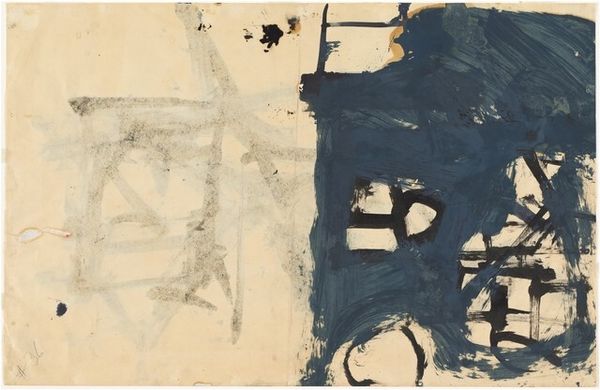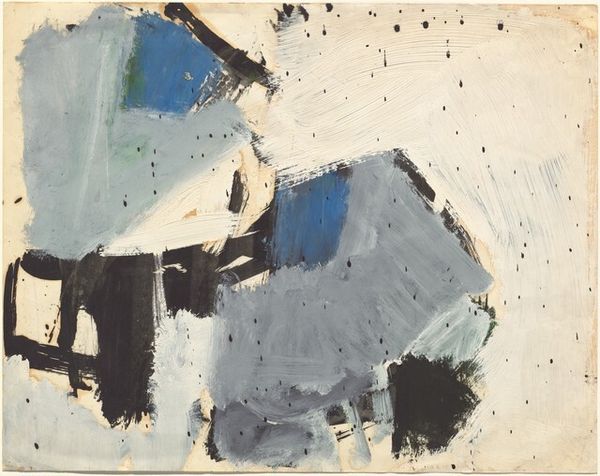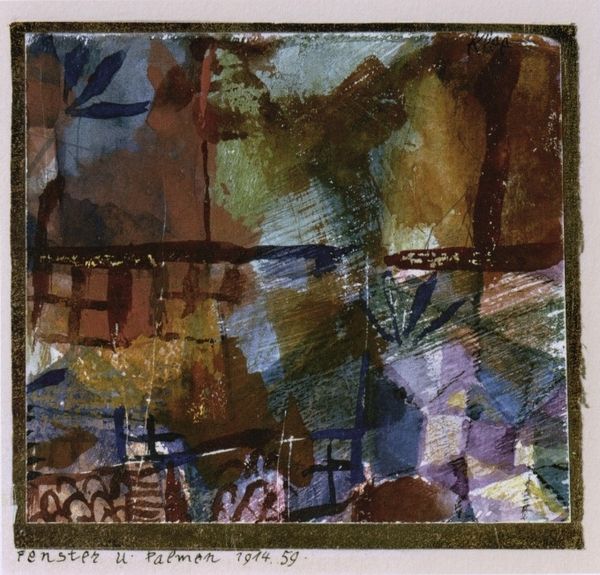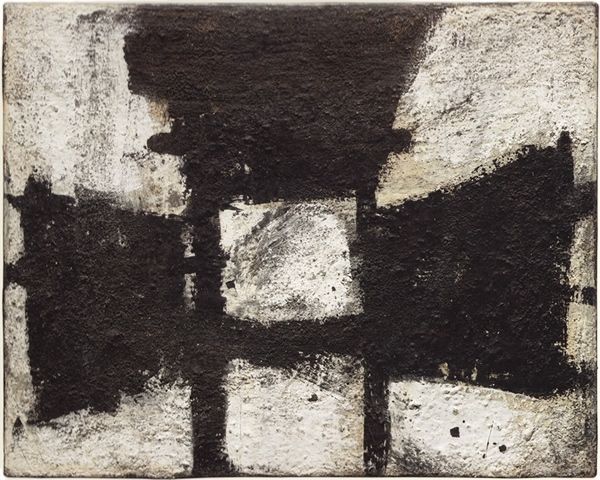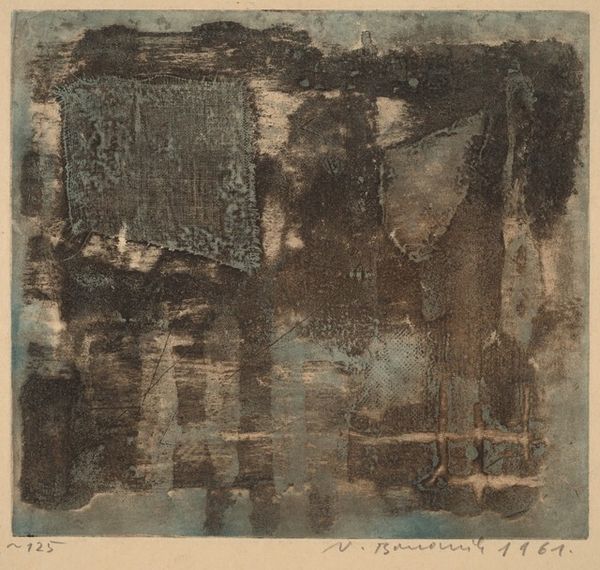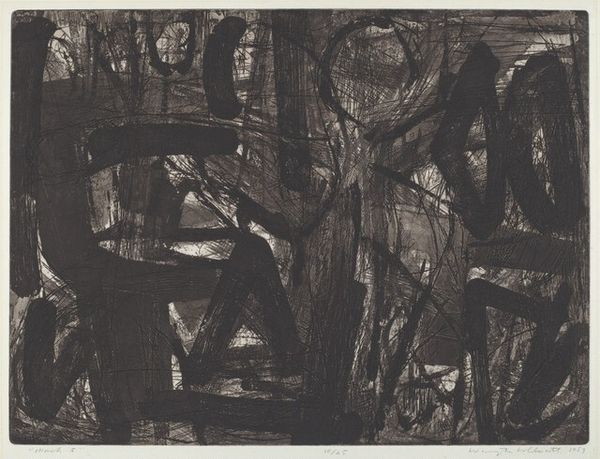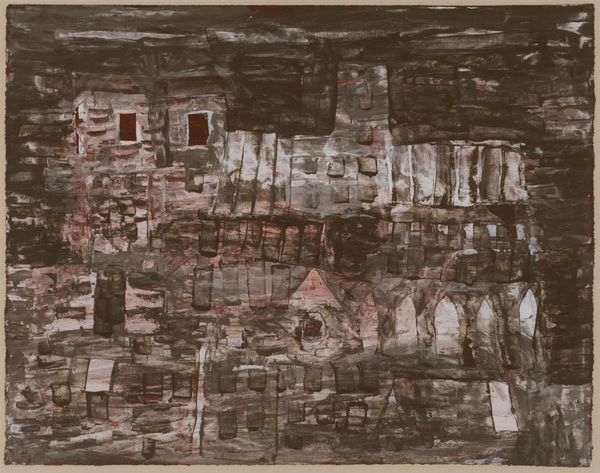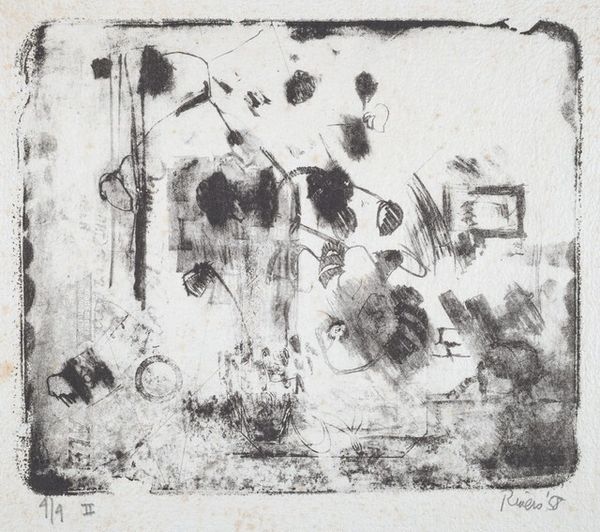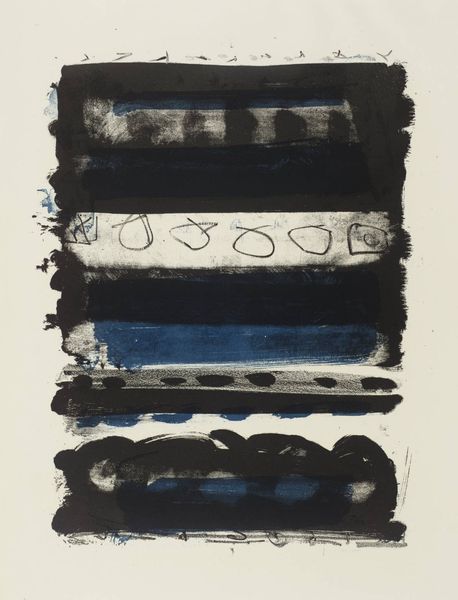
mixed-media, print
#
mixed-media
# print
#
asian-art
#
geometric
#
abstraction
#
mixed medium
#
mixed media
Copyright: National Gallery of Art: CC0 1.0
Editor: Here we have Hideo Hagiwara's "Composition," a mixed-media print. At first glance, it strikes me as a somewhat brooding piece, with its dominance of black and fragmented shapes. What's your perspective on the artwork's overall impact and composition? Curator: The tension here lies in the interplay of darkness and light. The composition's success is found in how Hagiwara juxtaposes areas of deep shadow with smaller, carefully placed blocks of color. Notice how the geometry is softened by the textures achieved within the printmaking process; the planes aren't perfect, lending a hand-crafted feel to it all. It strikes me as a study of spatial relations as much as a pure abstraction. What do you make of that tension? Editor: I see what you mean. It’s not just about the shapes, but also about how they interact. It's almost as if the darkness is actively shaping the visible forms, like a sculptor chiseling away to reveal a form. So, it’s not a static image, but one with a lot of internal movement and force. Do you think the materiality contributes to the movement? Curator: Precisely. It’s essential to consider the materiality; the way the ink sits on the paper, the slight imperfections. It’s these visual incidents that contribute to a dynamic surface. These compositional strategies result in an artwork which, despite its non-representational form, presents a complex interaction of aesthetic values, achieving a visual dialogue between elements. Editor: I see! I had initially considered the black somewhat monolithic, but you have explained that each component works together in tension with each other to yield a really unique perspective. Thank you! Curator: Indeed! Focusing on these internal relationships and elements is always helpful.
Comments
No comments
Be the first to comment and join the conversation on the ultimate creative platform.

